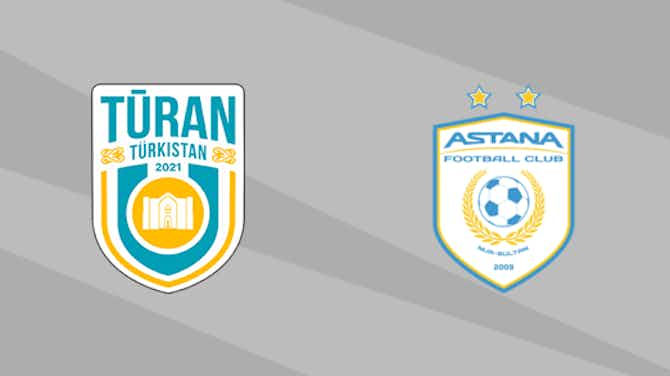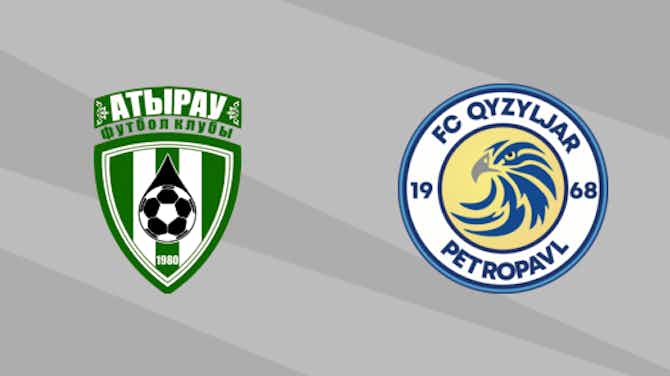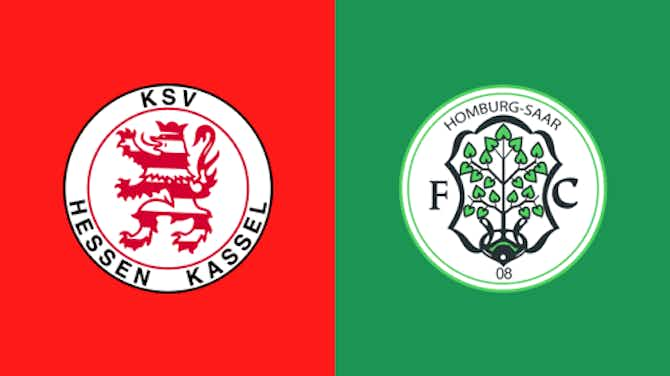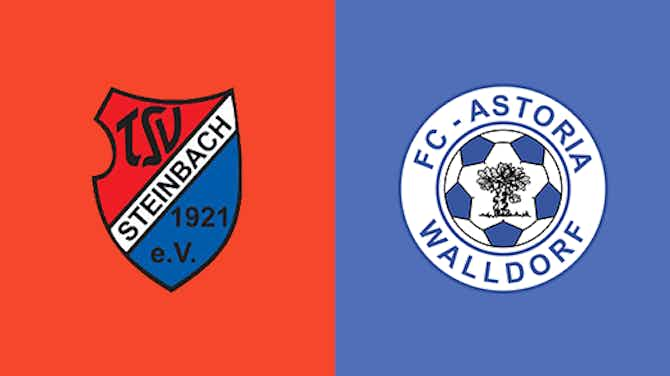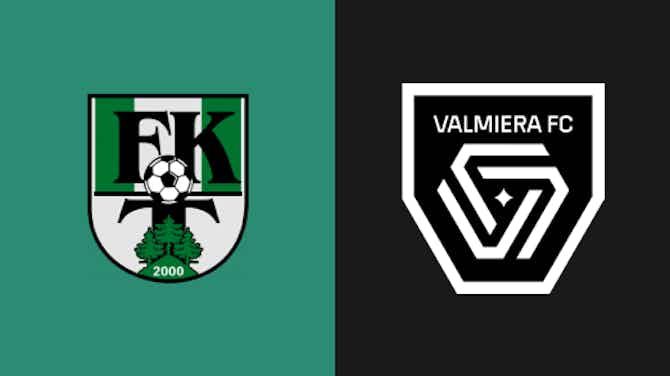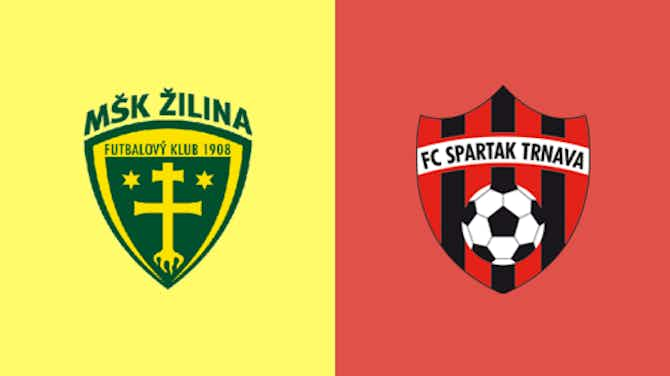The Celtic Star
·25 September 2021
Celtic’s Asset-Management Message Points to a Dangerous Backward Step
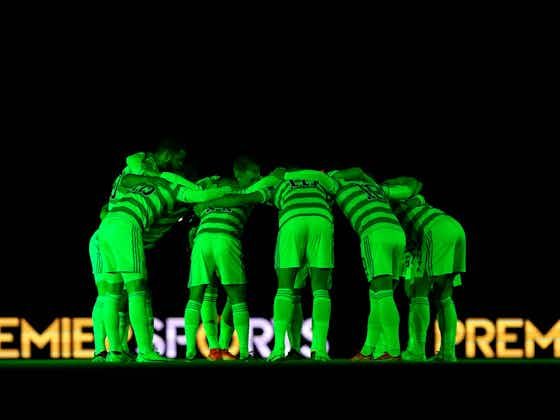
The Celtic Star
·25 September 2021

There has been an interesting narrative emerging since the Celtic plc annual results for year ending 30 June, 2021 were announced. Celtic of course posted a well-publicised £11.5m loss for a pandemic impacted year. Once again, the fans came to the fore as both an increase in merchandise sales and of course season tickets showed a financial and emotional backing for a football club that few clubs can mirror. In short, the message, and one not particularly conveyed by the club themselves, is the support putting their hands in their pocket for exorbitantly priced streams for their laptop and adidas branded kits and training gear saved Celtic from a catastrophic financial event.
Since then, there has been a lot of talk of asset management and how Celtic must return to a business model, and quickly, of selling players each year – to address shareholder worries no doubt. Questions have been conveniently placed publicly as to concerns over where the next sale will come from.
Celtic’s model in recent times has been to buy young talent give first team exposure, integrate into European football, put them in the shop window and sell to the bigger leagues, predominately the English Premier League. The message that is starting to seep out of late is that Celtic have somehow to get back to that and quickly. Yet the timing of this has little to do with the recent financial results and more to do with how Celtic as a club dealt with one particular year and how a now departed 72-day CEO had perhaps veered off message.

Dominic McKay in the directors box. Photo Andrew Milligan
Celtic made a decision to hold players during the attempts to reach ten-in-a-row. They retained players and they also bought ‘assets’ such as Albian Ajeti and Vasilis Barkas, using the much fabled eye-for-a-player attribute of our former manager and his DOF-come-CEO boss. Meanwhile the likes of Olivier Ntcham, Odsonne Edouard, Kris Ajer and Ryan Christie, some of whom who perhaps expected to leave last summer were either persuaded to remain or simply advised they were remaining in situ. Or maybe no bids were received in the middle of the pandemic.
It is difficult to judge the Celtic Boards thinking behind this decision. On one hand they could be lauded for retaining the talent and supplementing it for a record-breaking initiative, or alternatively in a contracting market they may have decided to hold on to assets and ride out a pandemic they perhaps didn’t expect to cut so deep and impact for so long. On that one I am tempted to give them the benefit of the doubt. However, having done so Celtic’s season disintegrated and many of the players retained were rumoured to have shown their dissatisfaction and this impacted on dressing room harmony and results.
For many of those players ten-in-a-row was not an emotional investment and when Celtic exited the Champions League, the ultimate shop window, to Ferencvaros the appetite for a season of beat, treble, repeat was not so appealing. A Quadruple Treble is a local issue, for players not brought up on such importance it faded into insignificance especially considering for many domestic successes had long become somewhat tiresome.
And with no Champions League to showcase their talents and a Europa League group that subsequently verged on embarrassing, some players lost any confidence in the tactical nous or otherwise of their manager, the ambition of the board and performance levels dropped when left to settle for local challenges. Ultimately as these players continued to be played this also seeped into domestic performances, particularly without a demanding support ensuring some semblance of standards may be retained. And we all know what happened next.
The fallout saw Peter Lawwell resign and Neil Lennon leave his post as manager. Captain Scott Brown soon announced he was heading for Aberdeen, and when a series of expensive stop gap loan deals, designed to save the season but ultimately was money for nothing, moved on, Celtic also found themselves with the biggest squad rebuild since Neil Lennon took over from Tony Mowbray, indeed it was even bigger than that.

Celtic Park Celtic temporary chief executive Michael Nicholson (centre) Photo: Jeff Holmes
In came a new CEO and belatedly after many months of Howe long for a manager, Ange Postecoglou arrived. From there we had a race against time to fill the squad with players who could fit a philosophy and win back a title, one with the added incentive of automatic champions league qualification behind it.
Celtic brought in 12 players. Time will tell how those players will settle down and whether a title challenge is a possibility, but almost immediately having completed his transfer window work Dominic McKay resigned, soon followed by trusted press sources pushing the narrative of the new man being pushed. Rumours abound of a dissatisfaction in McKay’s ability to negotiate the transfer market, of spending too much too soon and of the profile of the players signed not suiting our historical business model and the age of the players particularly so.
Joe Hart and James McCarthy fit the bill for experienced performers. If there is no sell on value, then don’t spend much. One cost a million the other a free transfer. But the ‘big’ money spent on Kyogo Furuhashi and Carl Starfelt at over £4million doesn’t fit, nor does the signings of Josip Juranovic and Georgios Giakoumakis. The reason is not so much the ability of the players it is their ages.

Kyogo Furuhashi. Photo Andrew Milligan
Juranovic, Giakoumakis, Starfelt and Kyogo are 26. For all those players, unless sold after a year, there is limited scope for the returns Celtic like. Yes, they may attract transfer fees but Scotland is limited to an extent as to what they can demand, as such the sell on clauses and percentages of future sales, a secondary transfer fee, is immediately negated. If these players spend two years at Celtic, they leave when they are 28 and as such when they move on from the buying club they will be in their thirties and with little resale value, and as such Celtic’s business model is hit.
Continued on next page…
Hence the asset management narrative being pushed of late. This is a clear indication from those running the club that we’ve veered off course and we’re in danger of impacting our business model. As such anyone expecting a January boost to the Celtic squad may also about to find that those brought to Celtic will be returning to the project types rather than experienced players, ones we can not only buy cheaper but sell higher and then subsequently also reap further rewards with percentages of future profits further down the line.
And there is merit in all of that. Celtic need to think that way and the manager they have brought in has improved teams and in turn that would tend to mean the individuals within those teams also improve and can then attract a higher value.
But here’s the rub, if the asset management issue is such a problem and the current transfer window didn’t fit the remit the CEO was given, are there no other ways to ensure the management of assets can be maximised and are there other ways to approach finances being bridged?

Photo: Ian McNichol
Well first of all, all the players we did hold on to have been moved on so we’re making up for lost time with the year we chose not to sell. Christie, Edouard and Ajer have moved for £30million plus already, this on the back of January sales of Klimala and Frimpong and others for smaller fees. Most no doubt also have the added carrot of sell on fees so there is an argument to say we’ve simply crammed two years of the business model into one and by the next time we announce the financial figures the club will be in rude health.
We have also brought in young talent alongside the more experienced heads in Liel Abada, Luke Shaw and Osaze Urhoghide and we have young players on loan in Carter Cameron-Vickers and Jota, both with options to buy and young enough to fit the asset management remit. So, it’s not a philosophy that has exactly been discarded, indeed there’s and argument to say it’s now simply been re-balanced with experienced players to aid the young emerging talent, and with older heads around young talent can be exposed gradually, sustainably and with a greater chance of developing their talents and in turn their value. As such does it really have to be a one-dimensional philosophy to recruitment?
If Celtic are serious about this model, it is also flawed by a lack of resources and planning in areas where initial investment could have a knock-on effect in developing players. A Head of football Operations was needed when Nick Hammond took his post, a Chief Scout was needed when Gary Penrice took his, and that was when a micromanaging CEO was still in post. An argument then could be the need now is more acute, yet those positions remain vacant.
A structure built around such positions being filled would have a knock-on effect on the issue of asset management. Have a structured footballing operation, well-resourced with a long-term plan and joined up philosophy, then young talent is recognised early, purchased cheaper, emerging markets can be identified, and all can be sold a vision of a pathway plan to the Celtic first team and ultimately the big move that would in turn reap them and the club the financial rewards we seek.
It may also mean we can avoid costly mistakes such as Barkas and Klimala if a system could be in place to thoroughly scout players, rather than a mixed bag of boardroom picks, managers wants and agent recommendations. Without that structure we miss out to clubs who have all that in place and can evidence it works such as Brentford, Seville and others.

Photo: Jeff Holmes
Then there is the issue of sports science, scouting and analytics. Celtic it would seem are rather behind the curve, yet the manager has stated these are areas Celtic can gain percentage gains and would aid his own squad in their abilities to handle the high demands and intensity of his playing philosophy. Investment in these areas would also feed into improving the players, subsequently mean trophies are won and also ensure Champions League football or latter stage Europa League is a regular possibility and as such the value of the players would rise and with it the fees we could demand. Do it properly and the players moving on have replacements with first team experience ready to step in and the process can repeat. So far Celtic have added Anton McElhone as Head of Sports Science but that was also a situation vacant and not an addition to the armoury as he replaced RB Leipzig bound Jack Nayler.
And there lies another issue for the club to address. Callum McGregor signed a new five year deal this week, a welcome show of faith in our new captain and good news indeed. Yet the club have been lax when it comes to contracts running down, an inability to persuade players to commit to the club and without being on the ball in such areas, players value diminishes if they are not on lengthy contracts when clubs come calling.
To get those players to sign new contracts they and their representatives need to know they are in good hands. They need to know that a modern structure can ensure regular exposure to high end European football and that a coaching staff can continue to develop them. To do that we have to show we have a level of ambition as a club to reach those levels, something where our lack of preparedness every summer at boardroom level seems to point to a club without any European ambition whatsoever. So little in fact we are not even willing to plan to spend the money we do have wisely so that when European qualifiers and the low hanging fruit of some £30m just for qualifying alone is a possibility.
Players and representatives realise a lack of ambition when they see it, especially when a long-standing pattern has emerged, just the same as we supporters see it too. Players and agents also need to know that when we sign them, and promise a big-league club later down the line, that we will honour the contents of our sales pitch. This is something we haven’t been able to do and as such has a knock-on effect on players and agents trusting us enough to commit to new contracts.
Celtic were public in trying to offer new contracts at various stages to several players, particularly Christie, Ajer and Edouard but were unable to do so. There could be good reasons for this but when it does occur, we have to learn to sell at the right time. If we aren’t getting basics like this right the case is again made for a Director of Football to oversee first team contracts and those of the younger age groups being poached elsewhere as we’ve seen all to regularly in recent times, only then will this asset management model really work.
I have a lot of faith that the model Celtic are trying to get back on track with could work, but I also have plenty of reservations that the results we can get from such an approach are not being maximised by these other areas of concern not being addressed. If Celtic intend to take this approach, then there has to be a more professional outlook than feeding a narrative of it being essential for the financial health of the club without addressing all the necessary areas to make it a sustainable and even more profitable success. Even if this narrative being put out there is to soothe shareholder concerns, then a communicated plan of a modernised outlook alongside the previous business model would surely embolden that message.
Communicate that vision further to the support and you may just find the Celtic fans have a level of understanding the board seems fearful we don’t have and would embrace such changes, but resorting to project signings and hoping for the best without a structure in place, underpinned by reasonable levels of ambition, then the chasm between the board and the support will continue to widen and both sides will become entrenched.
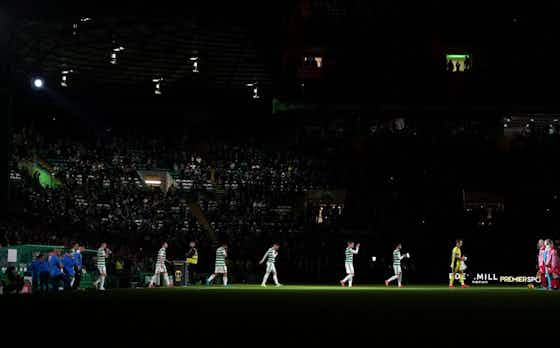
Celtic Park’s Disco Light Photo: Andrew Milligan
This is entirely avoidable and with a January transfer window approaching and a support expecting Ange Postecoglou to have key areas of the squad addressed, the time for a sustainable plan to feed into future recruitment and ensure less costly errors and under-resourced punts on players has never been more essential.
Yet with a modern thinking CEO having left after 72 days and so far no sign of any tangible structural change on the immediate horizon, it will be a difficult sell from the board to the Celtic support to return to an asset management model that depends on young talent to sustain it without genuine evidence of a forward-thinking plan to support it and shareholders will surely see that too.
And it doesn’t matter how many trusted press plants and compliant bloggers are employed to convey that narrative, words mean nothing now without modernisation and proper communication.
To return to the old ways and hope player sales will prop up a business model and at the same time ignoring the modernisation of the world of football going on around them simply cannot be sustainable, and shareholders who apparently now need soothing leaks to the press may well consider taking a much closer look as to why such appeasement is required.
Niall J
More Stories / Latest


Live




Live


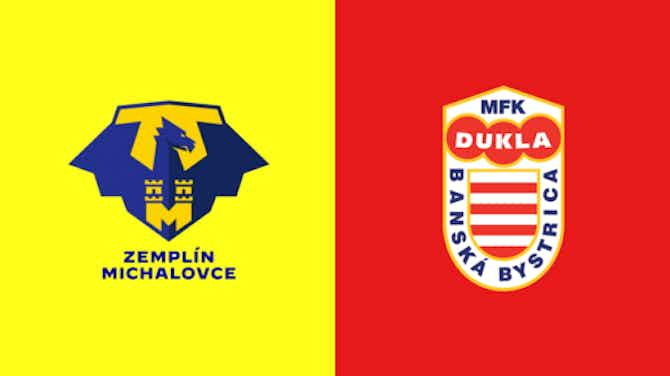

Live

















